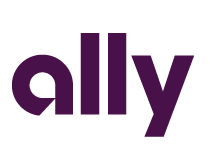Fearless innovation begins here
Featured Customer Stories














CUSTOMER TRANSFORMATIONS
Securing open source at speed
-

PRODUCTS USED


How we increased velocity for ABN AMRO
Challenge
Software development for ABM AMRO’s clients was painstakingly slow. The simplest “Hello World!” test program took nearly six months to reach production because of the multi-step waterfall process and manual approvals.
Solution
Shifting from a waterfall to a DevOps culture, they embraced CI/CD using Sonatype Lifecycle for open source monitoring and tracking, and Repository for their binary artifactory. Build speed more than doubled as a result.
-

PRODUCTS USED

How we uncovered licensing risks for Progress
Challenge
Progress Software wanted to acquire decision management firm Corticon, and integrate their business rules engine into a number of Progress products. They needed to ensure that there were no GPL components included in Corticon’s product to avoid any unforeseen risks in the acquisition or product integration.
Solution
Sonatype provided the tools and support Progress needed to streamline due diligence, reduce risk, and move forward with confidence. They used Nexus Lifecycle to quickly confirm Corticon’s code was free of licensing issues.







